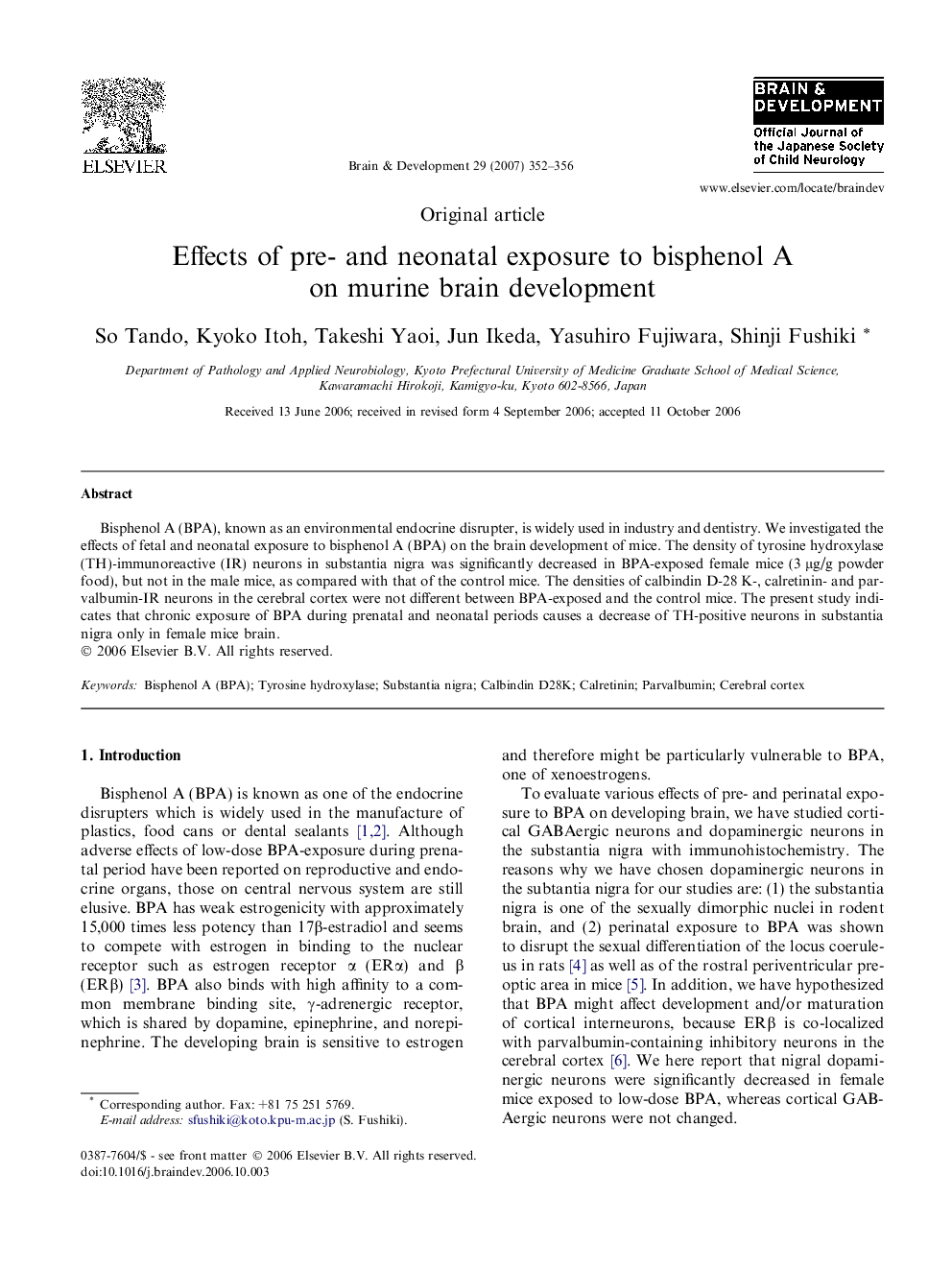| Article ID | Journal | Published Year | Pages | File Type |
|---|---|---|---|---|
| 3038145 | Brain and Development | 2007 | 5 Pages |
Bisphenol A (BPA), known as an environmental endocrine disrupter, is widely used in industry and dentistry. We investigated the effects of fetal and neonatal exposure to bisphenol A (BPA) on the brain development of mice. The density of tyrosine hydroxylase (TH)-immunoreactive (IR) neurons in substantia nigra was significantly decreased in BPA-exposed female mice (3 μg/g powder food), but not in the male mice, as compared with that of the control mice. The densities of calbindin D-28 K-, calretinin- and parvalbumin-IR neurons in the cerebral cortex were not different between BPA-exposed and the control mice. The present study indicates that chronic exposure of BPA during prenatal and neonatal periods causes a decrease of TH-positive neurons in substantia nigra only in female mice brain.
